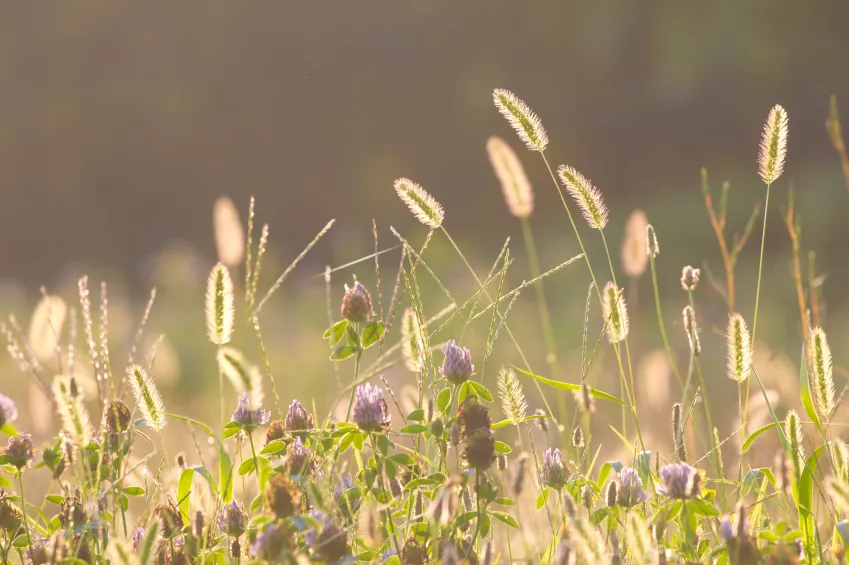With a dry or lean meadow, you create a true biotope on your property in which numerous herbs, subshrubs and heather plants, but also a wide variety of animals - such as insects - feel very comfortable. However, a dry meadow is not suitable for any kind of agricultural use, such as haymaking or grazing by grazing animals.

Characteristics of a dry meadow
As the name suggests, the dry meadow is characterized by dry soil that is poor in nutrients. Ideal soils for dry meadows are very sandy and, due to the loose and permeable soil, have very good drainage. Moisture, for example from precipitation, seeps away or evaporates very quickly. As a rule, dry meadows require very little care, since e.g. too frequent fertilization damages plants adapted to the poor soil. There are numerous different types of poor meadows, the typical plant population of which depends on the one hand on the specific location - more flat land or more mountains - and on the other hand on the type of subsoil. Dry meadows do not need a lot of nutrients and moisture, but they do need plenty of sun.
Typical plants of a dry meadow
You will rarely find grasses on a dry meadow. Moisture and nutrient-loving wild plants such as dandelion or sorrel do not feel comfortable here either. Instead, the conditions described are ideal for meadow herbs, which are usually quickly displaced by competing plants on conventional meadows. Typical plants for dry grass are, for example:
- different types of sedum
- Heather Pinks and Sand Thrifts
- Field chickweed
- Mountain Sanddrops
- various gentians
- silver thistles
- pasqueflowers
- Carthusian carnations
- Meadow Sage
- various thymes (sallow thyme, common thyme)
- agrimony
- Heron Beak
- sweet clover
- also some dry grasses (silver grass, blue-green iridescent grass, steppe timothy grass, common trembling grass)
Adonis roses, cowslips or sand cinquefoil also thrive excellently on a dry meadow in very sunny locations. When buying a seed mix for dry meadows, make sure that it contains primarily perennial, native plants.
Types of dry meadow
Essentially, the different types of dry meadow are differentiated from one another based on their subsoil, although the transitions are mostly fluent and most meadow herbs thrive on almost any poor soil. The most important dry meadows are:
- sandy dry meadow
- Lime Dry Meadow
- Steppe dry meadow
Sandy dry meadows are typical of the heath landscapes in central and northern Germany, while the calcareous dry meadows are mainly found in Central Europe. The semi-dry meadows, which are common everywhere but have been pushed back in many places due to intensive agricultural use, represent a natural transition between dry and rich meadows.
tips and tricks
Clay and loamy soils are not suitable for creating a dry meadow. However, unsuitable soil can be excavated and replaced with a more optimal sand-soil mixture, which is spread over a thick layer of gravel.